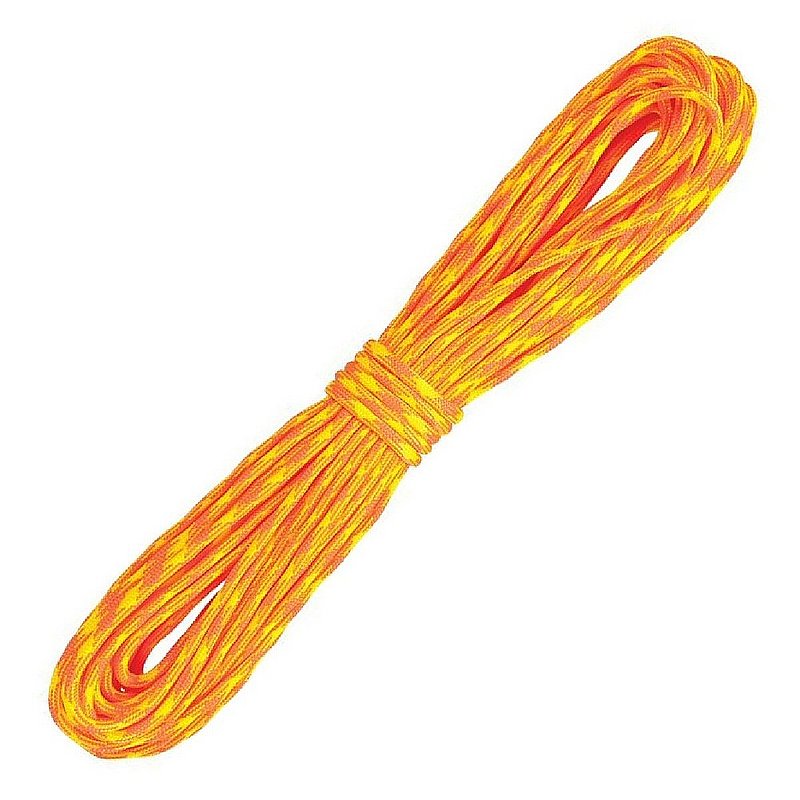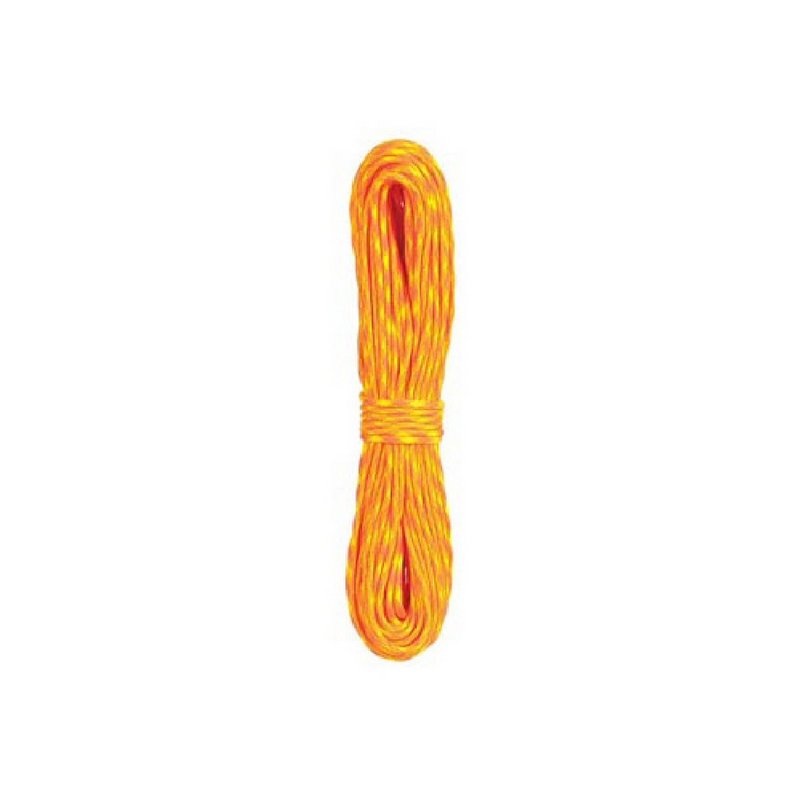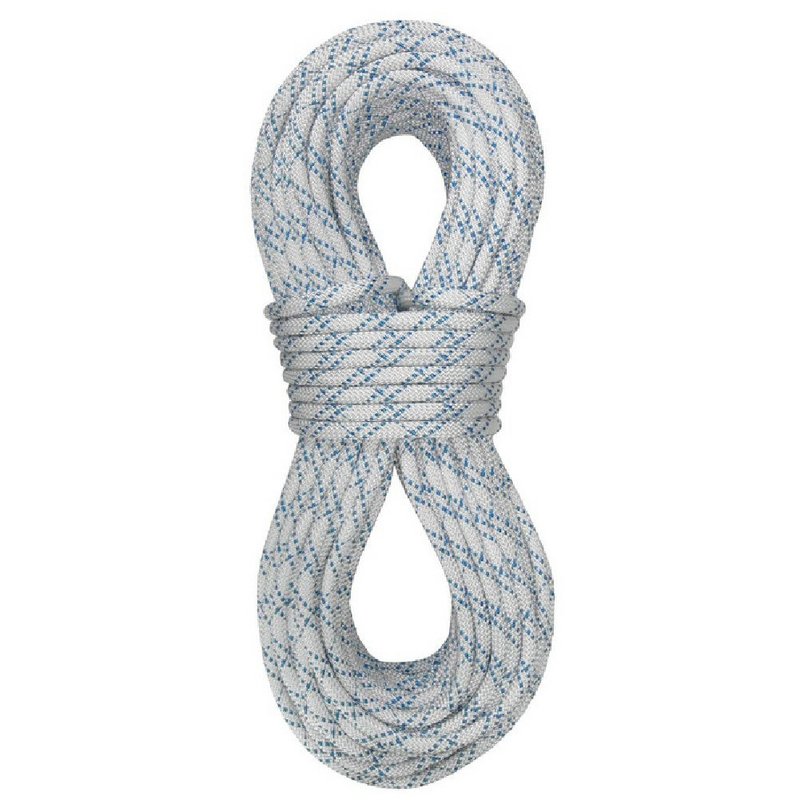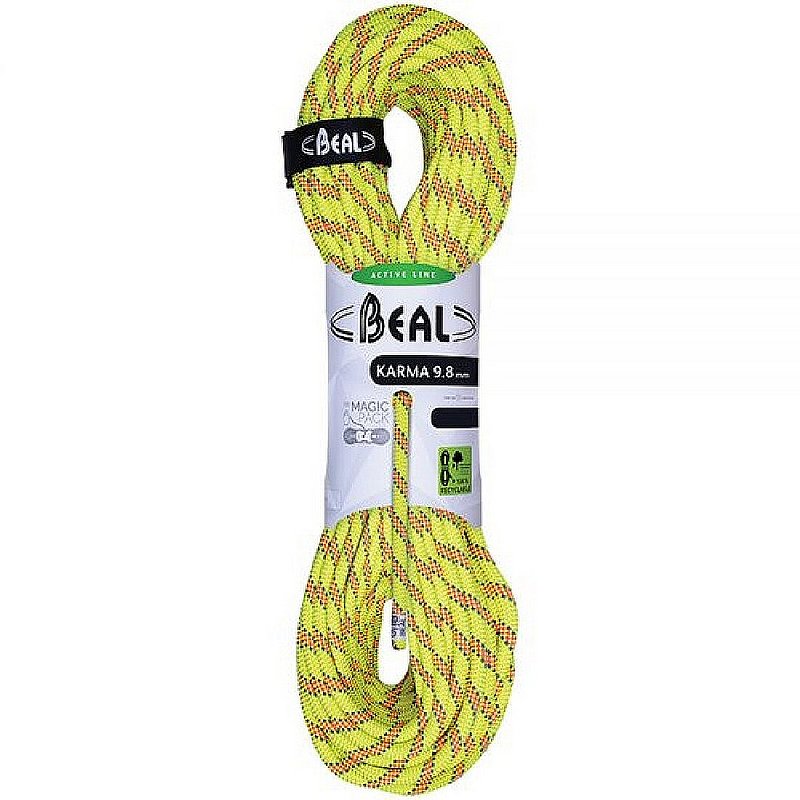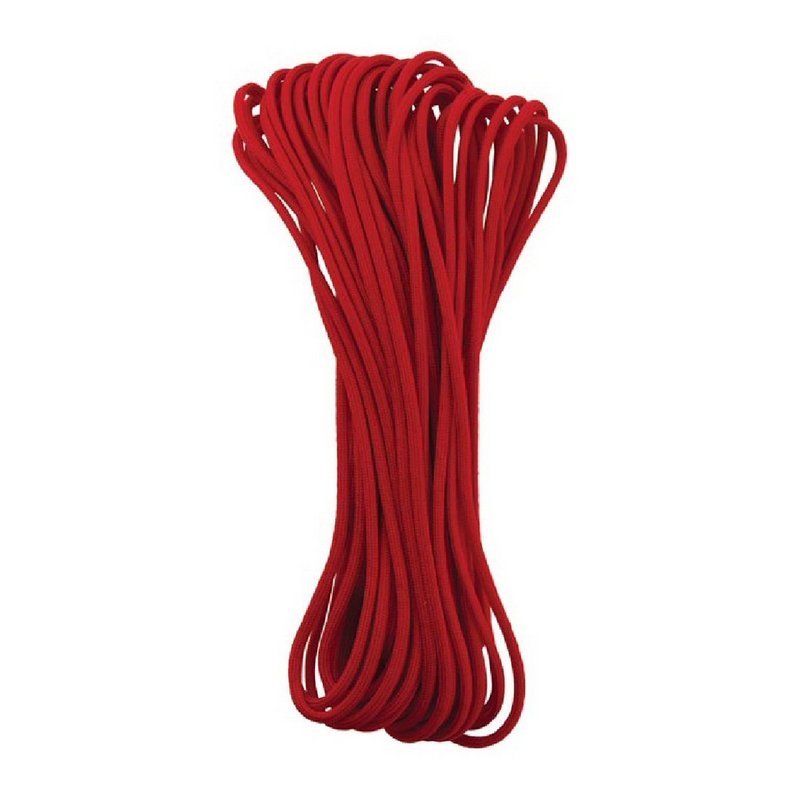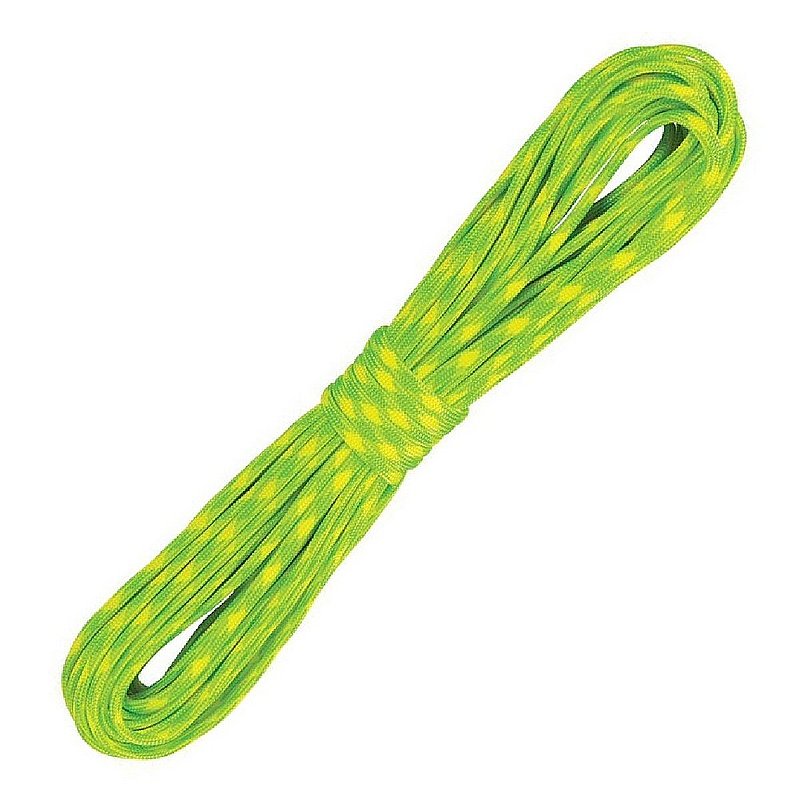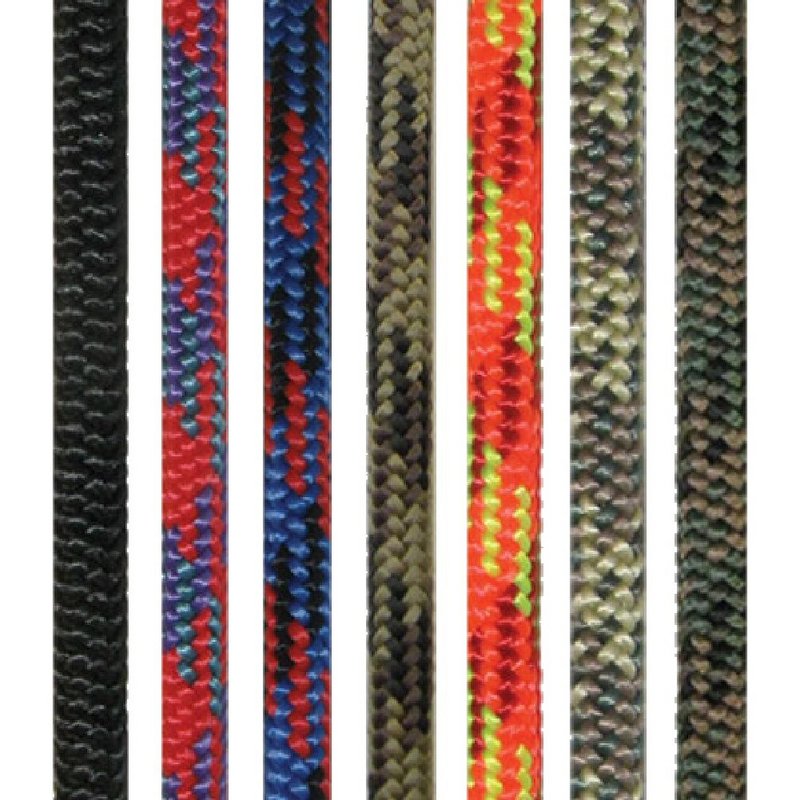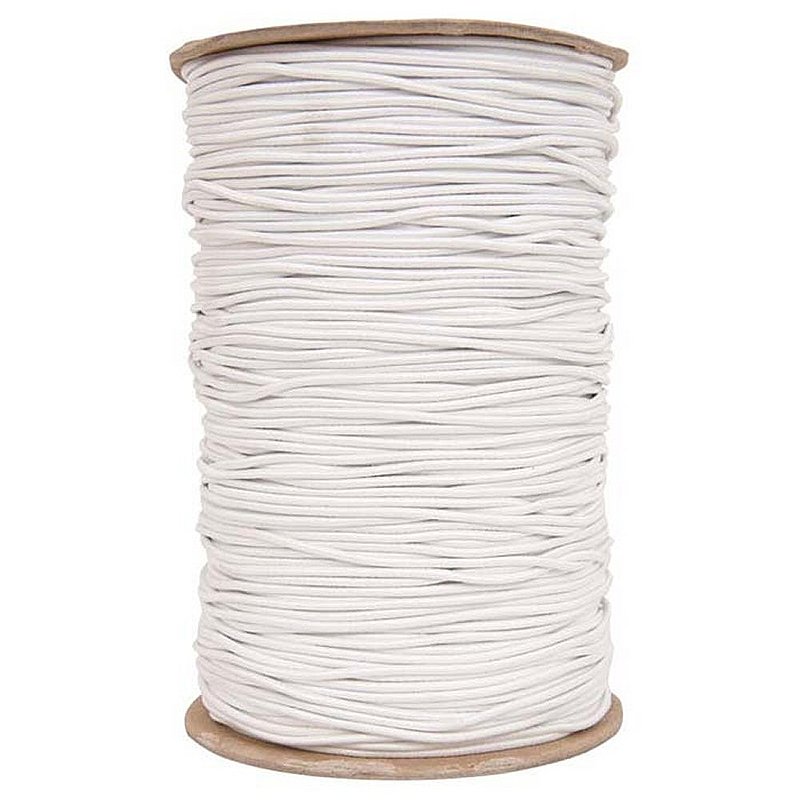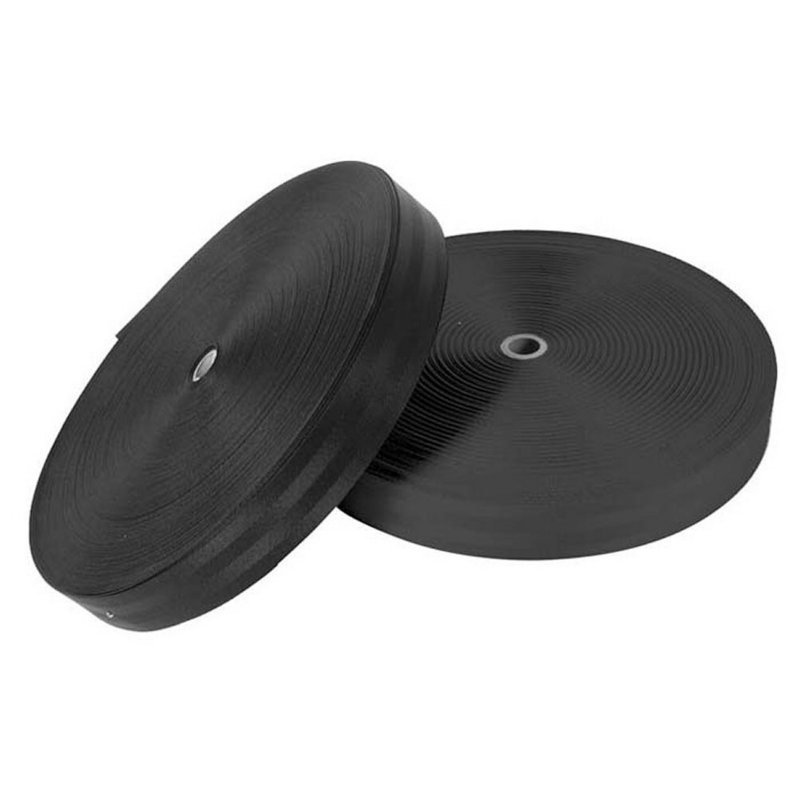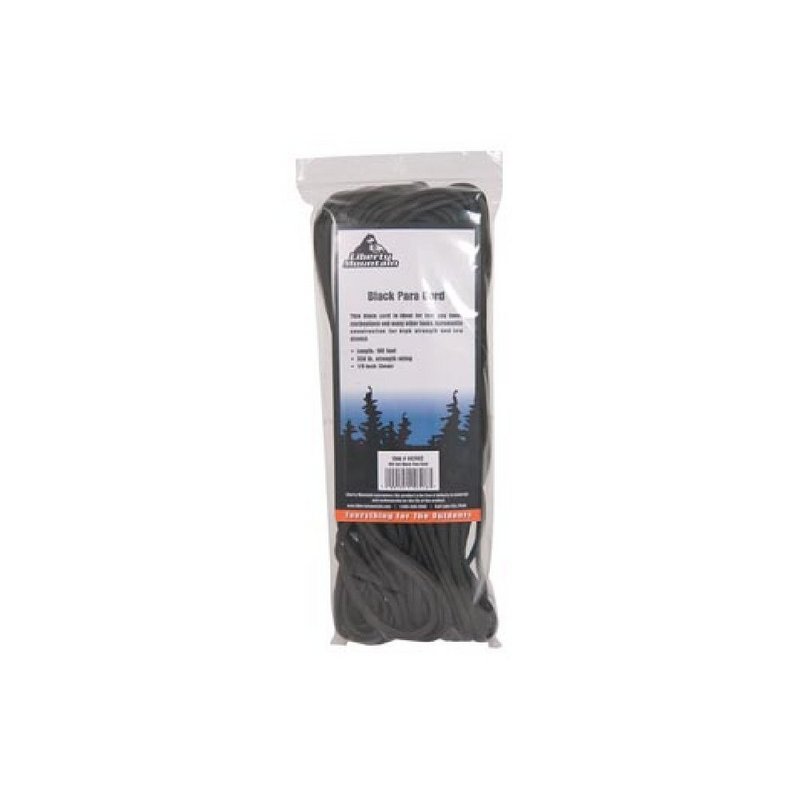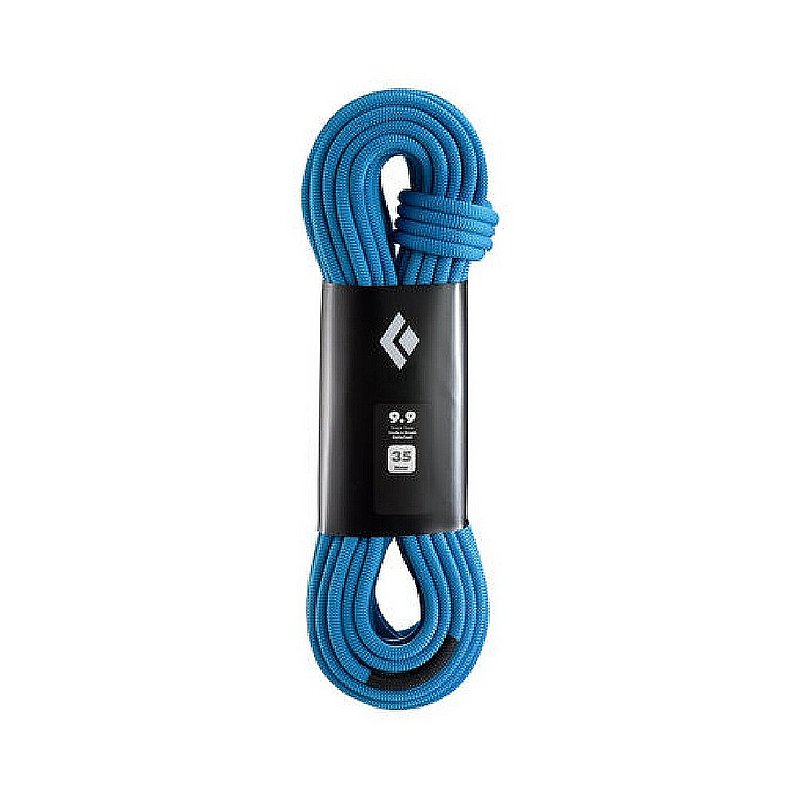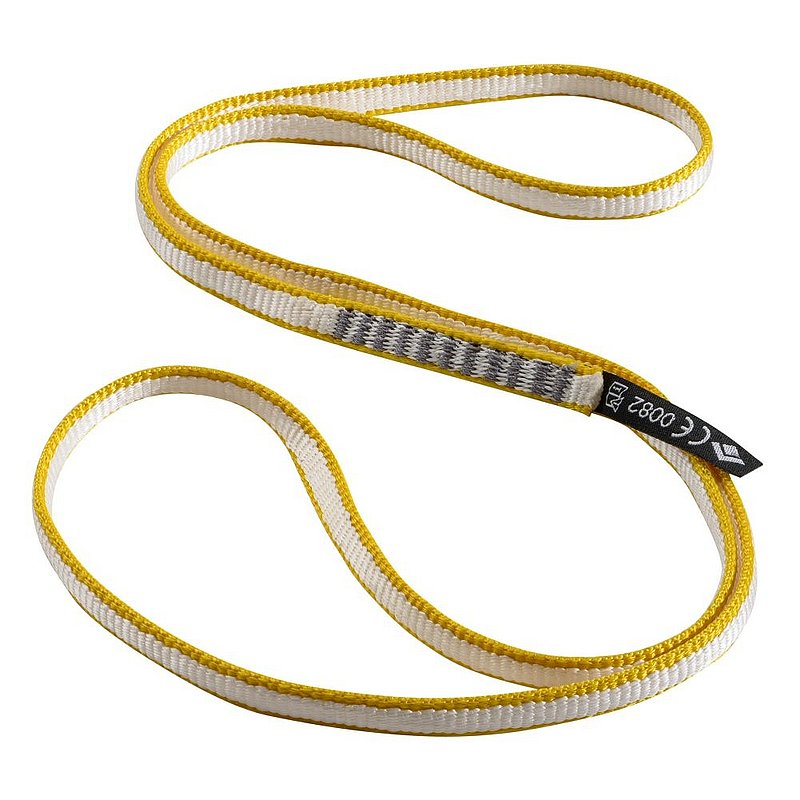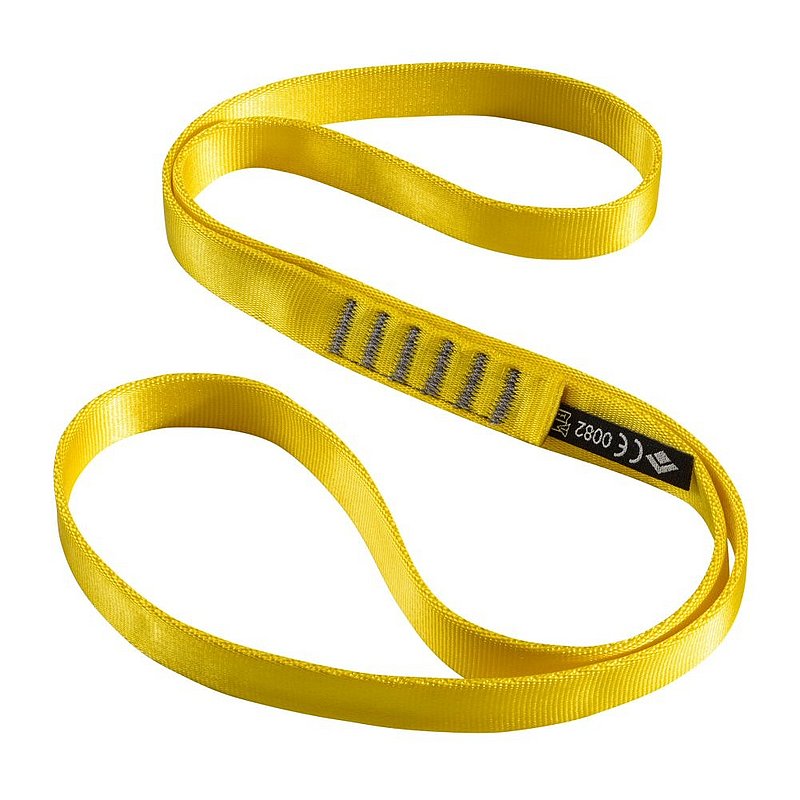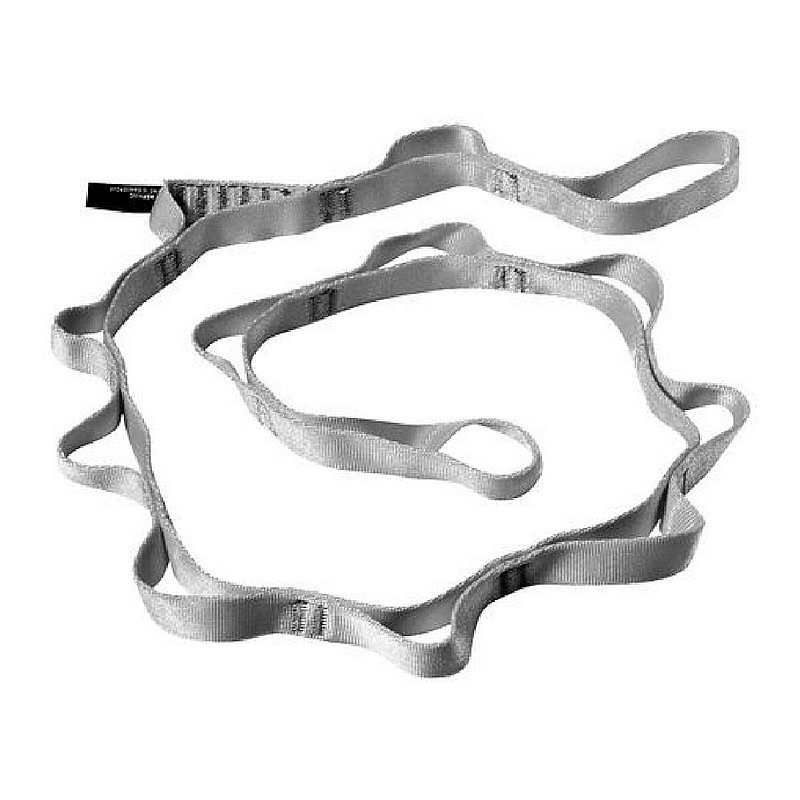Climbing Gear » Ropes / Slings / Webbing
Ropes / Slings / Webbing
The first climbing ropes were ordinary manila- heavy, not very strong, easily frayed, and very static. The last one of those characteristics was probably the most dangerous. Even a short fall onto a static, stretch-free rope can be painful or fatal. While we still use static rope (technically it's semi-static) for rappelling, modern dynamic ropes are almost bungee-like in their stretchiness. As long as the anchors hold and there are no ledges or inconvenient trees in the way climbers can safely fall for almost unbelievably long distances these days.
Rock climbing rope comes in various widths. A wide rope is heavier than a thin one, as you'd expect. The difference is certainly enough to notice at the top of a long pitch or during an extended walk in, but on the other hand, thinner climbing ropes don't last as long as a good quality, durable thick ones. Buying a rope with a dry cover means that it's carefully treated to repel water. Not too important if you'll mostly be climbing indoors but certainly very handy if you're ice or mixed climbing, because if water can't get into a rope it can't freeze, and great for sea cliff situations where the rope might get wet. A good dry cover will also help make your rope last longer, although a rope bag will do more in that area!
Rock climbing rope comes in various widths. A wide rope is heavier than a thin one, as you'd expect. The difference is certainly enough to notice at the top of a long pitch or during an extended walk in, but on the other hand, thinner climbing ropes don't last as long as a good quality, durable thick ones. Buying a rope with a dry cover means that it's carefully treated to repel water. Not too important if you'll mostly be climbing indoors but certainly very handy if you're ice or mixed climbing, because if water can't get into a rope it can't freeze, and great for sea cliff situations where the rope might get wet. A good dry cover will also help make your rope last longer, although a rope bag will do more in that area!


